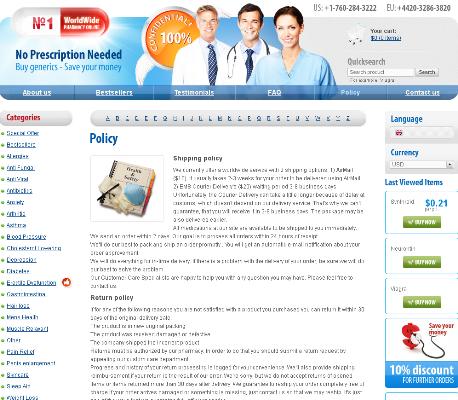Buy Promethazine Online
Promethazine in Pediatrics: Safety and Guidelines
Understanding Promethazine: Uses in Children
For many families facing a child with allergies or motion sickness, promethazine may seem like a quick solution. This medication, an antihistamine, can help alleviate symptoms such as sneezing, runny nose, and nausea. In pediatric care, promethazine is sometimes prescribed to manage allergic reactions or prevent motion sickness during travel.
However, while its effectiveness is recognized, careful consideration of appropriate uses is essential to ensure children benefit safely. Awareness of how and when it should be administered is crucial.
| Common Pediatric Uses | Symptoms Addressed |
|---|---|
| Allergic Reactions | Itching, hives, swelling |
| Motion Sickness | Nausea and vomiting |
| Pre- and Post-Surgery Sedation | Anxiety reduction, sedation |
Age Restrictions and Safety Warnings to Note

When it comes to pediatric care, not all medications are created equal, and promethazine is a prime example of this truth. This drug, often used for allergy relief or as an anti-nausea agent, comes with strict recommendations regarding the age of the child receiving it. In fact, the FDA advises against giving promethazine to children under the age of two due to a significant risk of respiratory depression, which can be life-threatening.
Parents and caregivers might be unaware of these limitations, mistakenly assuming over-the-counter remedies are universally safe for all ages. However, even older children require careful monitoring and strict adherence to dosing guidelines. Warnings also emphasize the increased sensitivity some children may exhibit, especially those with underlying respiratory issues or medical complexities.
Overdosing poses particular dangers, increasing the likelihood of serious side effects such as severe drowsiness, confusion, or slowed breathing. It’s essential that caregivers never modify doses or combine promethazine with other sedative drugs without explicit guidance from a healthcare professional.
Staying informed about these age-related restrictions and necessary precautions empowers families and clinicians to safeguard young patients. Ultimately, responsible use is the cornerstone of maximizing the benefits of promethazine while minimizing the risks.
Recognizing Adverse Reactions and Side Effects
When a child is prescribed promethazine, careful attention to their response is crucial. While many children tolerate this medication well, some may experience drowsiness, irritability, or even paradoxical hyperactivity. More concerning side effects can include difficulty breathing, muscle stiffness, or sudden changes in heart rate, which are red flags for a medical emergency.
Parents should also be aware of more subtle symptoms like dry mouth, confusion, or blurred vision. By observing your child closely after administering promethazine, early signs of distress can be detected and quickly addressed. Immediate reporting of any unusual behavior or physical changes helps prevent complications and ensures your child’s safety.
Best Practices for Dosage and Administration

When it comes to administering promethazine to children, accuracy is key. Dosing should be based precisely on a child's age and weight, always following physician instructions or product labeling. Liquid formulations allow for more precise measurements using marked dosing syringes or cups—not kitchen spoons.
Giving promethazine with or after food can help minimize stomach upset. It’s critical never to exceed recommended amounts, as overdosing increases the risk of dangerous side effects like respiratory depression or severe drowsiness in pediatric patients.
Lastly, parents and caregivers should watch for any changes in the child's alertness or breathing following each dose. Consistent timing of medication can also aid effectiveness and safety, while close communication with a healthcare provider helps tailor treatment to the child’s specific needs and response.
Interactions with Other Pediatric Medications
When prescribing promethazine for children, it’s essential to consider how this medication may interact with others commonly used in pediatric care. For example, combining promethazine with central nervous system depressants—such as antihistamines, benzodiazepines, or certain pain medications—can amplify side effects like drowsiness, confusion, or even respiratory depression. Parents and caregivers should be vigilant about disclosing all medicines a child is taking to avoid unintended consequences.
Beyond sedatives, promethazine may intensify anticholinergic side effects when used with drugs like atropine or tricyclic antidepressants, leading to symptoms such as dry mouth, constipation, or urinary retention. Monitoring children closely for these responses and consulting a pediatrician before introducing new medications can significantly improve safety and effectiveness in treatment.
| Drug Class | Potential Interaction with Promethazine | Recommended Precaution |
|---|---|---|
| CNS Depressants | Increased sedation, respiratory depression | Monitor closely, avoid if possible |
| Anticholinergics | Enhanced anticholinergic effects (dry mouth, constipation) | Watch for symptoms, adjust dosage |
| Antidepressants (TCAs) | Increased anticholinergic and sedative effects | Consult physician, assess risk |
Guidelines from Leading Pediatric Health Authorities
When it comes to using promethazine in children, recommendations from trusted pediatric organizations make all the difference for clinicians and caregivers. Major authorities like the American Academy of Pediatrics (AAP) and the U.S. Food and Drug Administration (FDA) issue clear, evidence-based positions that prioritize safety above all. Their strict guidance is a response to decades of research underscoring the medication’s potential risks, particularly in young patients.
For instance, both agencies sharply warn against administering promethazine to children under two years old due to the risk of potentially fatal respiratory depression. Dosing for older children is to be approached with caution, always adhering to the lowest effective dose and close monitoring. Healthcare providers are advised to educate families about recognizing side effects and stress the importance of following professional instructions.
These recommendations evolve as new research emerges, highlighting the critical need for ongoing awareness. Regular consultation of updated official statements ensures that children who might need promethazine receive care grounded in both current science and a commitment to patient well-being. Ultimately, families and providers should view these guidelines not as obstacles, but as vital safeguards that help shape safe and effective pediatric therapy.

